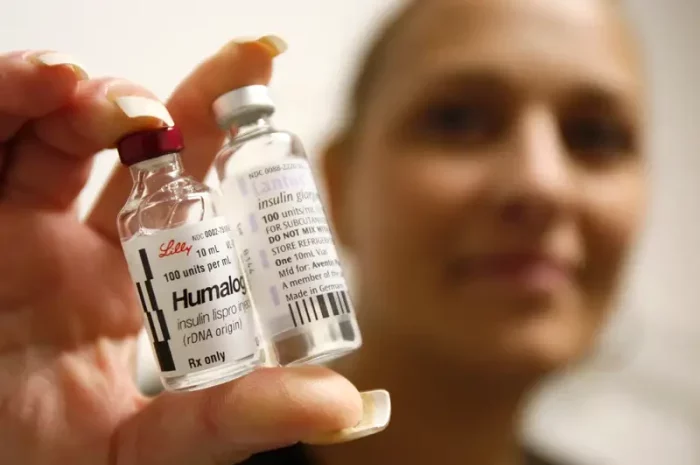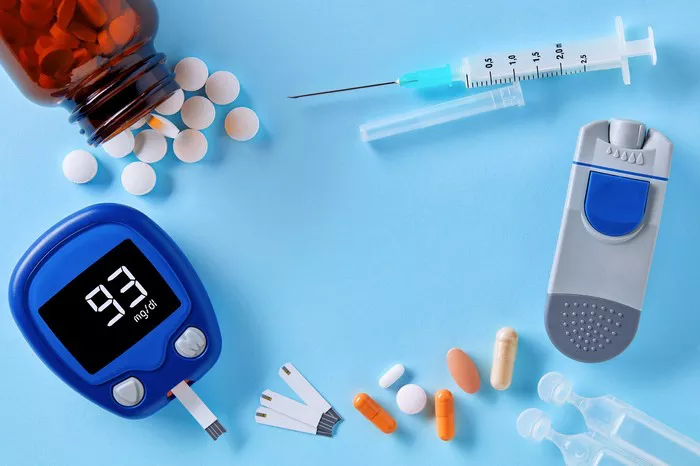Diabetes mellitus, a chronic metabolic disorder characterized by hyperglycemia, affects millions globally. The condition arises either from insulin deficiency, as seen in Type 1 diabetes (T1D), or insulin resistance, commonly associated with Type 2 diabetes (T2D). Treatment for diabetes mellitus aims to maintain blood glucose levels within a target range to prevent acute complications like hypoglycemia and chronic complications such as cardiovascular diseases, neuropathy, retinopathy, and nephropathy. This article delves into the various modalities used to treat diabetes mellitus, focusing on pharmacological therapies, lifestyle interventions, and emerging treatment paradigms.
Pharmacological Therapies
Pharmacotherapy is central to managing both T1D and T2D. The choice of medication is guided by factors such as the type of diabetes, patient’s age, coexisting medical conditions, and specific glycemic targets.
Insulin Therapy
Types of Insulin
Rapid-Acting Insulin: This includes insulin lispro, aspart, and glulisine. They are typically used to manage postprandial blood glucose spikes. Onset is within 15 minutes, peak action at 1-2 hours, and duration of action is about 4-6 hours.
Short-Acting Insulin: Regular insulin falls into this category. It has an onset of 30 minutes, peaks at 2-4 hours, and lasts up to 6-8 hours. It’s often used in managing blood sugar during meals and for correction dosing.
Intermediate-Acting Insulin: NPH insulin (Neutral Protamine Hagedorn) has an onset of 1-2 hours, peaks at 4-8 hours, and lasts 10-20 hours. It is often used to cover insulin needs for half a day or overnight.
Long-Acting Insulin: Insulin glargine, detemir, and degludec fall into this category. They provide a steady insulin level with no pronounced peak and last up to 24 hours, making them suitable for once or twice-daily dosing to maintain basal insulin levels.
Insulin Delivery Methods
- Syringes and Pens: Traditional methods allowing precise dosing of insulin.
- Insulin Pumps: Deliver continuous subcutaneous insulin infusion (CSII), offering flexible and precise insulin delivery. Advanced pumps can adjust insulin delivery based on continuous glucose monitoring (CGM) readings.
- Inhaled Insulin: Recently reintroduced as a rapid-acting insulin for mealtime glucose control.
Oral Hypoglycemic Agents
Biguanides
Metformin is the first-line treatment for T2D, acting primarily by reducing hepatic glucose production and improving insulin sensitivity. It’s well-tolerated, cost-effective, and can also modestly reduce weight and improve lipid profiles.
Sulfonylureas
These include glimepiride, glyburide, and glipizide. They stimulate pancreatic beta cells to release more insulin. Although effective, they can cause weight gain and hypoglycemia.
Meglitinides
Repaglinide and nateglinide work similarly to sulfonylureas but have a shorter duration of action, requiring multiple daily doses before meals. They offer flexibility in meal timing but also carry a risk of hypoglycemia.
Thiazolidinediones (TZDs)
Pioglitazone and rosiglitazone enhance insulin sensitivity by acting on PPAR-gamma receptors in adipose tissue. They improve glycemic control but are associated with weight gain, fluid retention, and potential cardiac risks.
Dipeptidyl Peptidase-4 (DPP-4) Inhibitors
Sitagliptin, saxagliptin, and linagliptin enhance the action of incretin hormones, which increase insulin release and decrease glucagon levels. They are generally well-tolerated with a low risk of hypoglycemia but provide modest efficacy in lowering HbA1c.
Sodium-Glucose Co-Transporter-2 (SGLT2) Inhibitors
Canagliflozin, dapagliflozin, and empagliflozin reduce glucose reabsorption in the kidneys, leading to glucosuria and reduced blood glucose levels. They offer additional benefits like weight loss and reduced blood pressure but may increase the risk of urinary tract infections and ketoacidosis.
Glucagon-Like Peptide-1 (GLP-1) Receptor Agonists
Exenatide, liraglutide, and dulaglutide mimic the incretin hormone GLP-1, enhancing insulin secretion, inhibiting glucagon release, and slowing gastric emptying. They are injectable agents that aid in weight loss and cardiovascular risk reduction but can cause gastrointestinal side effects.
Lifestyle Interventions
Dietary Modifications
Macronutrient Balance
Carbohydrates: Focus on complex carbohydrates with a low glycemic index to avoid rapid blood sugar spikes. Sources include whole grains, legumes, fruits, and vegetables.
Proteins: Include lean meats, fish, poultry, tofu, and legumes. Protein helps in satiety and can prevent overeating.
Fats: Emphasize healthy fats such as those found in nuts, seeds, avocados, and olive oil. Limit saturated and trans fats to reduce cardiovascular risks.
Meal Timing and Portion Control
Eating smaller, frequent meals can help maintain stable blood glucose levels. Incorporating portion control techniques and mindful eating practices can also prevent overeating and promote weight management.
Physical Activity
Regular physical activity improves insulin sensitivity and aids in weight management. A combination of aerobic exercises (such as walking, cycling, swimming) and resistance training (like weight lifting or resistance bands) is recommended. At least 150 minutes of moderate-intensity exercise per week is advised.
Weight Management
For overweight or obese individuals, even modest weight loss (5-10% of body weight) can significantly improve glycemic control and reduce the risk of complications. Behavioral interventions, including counseling, support groups, and structured weight loss programs, can be beneficial.
Emerging Treatment Paradigms
Continuous Glucose Monitoring (CGM)
CGM devices provide real-time glucose readings, allowing for more precise insulin dosing and better glucose management. They can alert patients to hypo- or hyperglycemia, improving safety and quality of life.
Closed-Loop Insulin Delivery Systems
Also known as artificial pancreas systems, these devices combine CGM with an insulin pump to automate insulin delivery based on glucose levels. They are showing promise in providing tighter glycemic control and reducing the burden of diabetes management.
Bariatric Surgery
For individuals with severe obesity and T2D, bariatric surgery (such as gastric bypass or sleeve gastrectomy) can lead to significant weight loss and remission of diabetes. The benefits include improved insulin sensitivity and reduced medication requirements.
Stem Cell Therapy and Islet Transplantation
Research is ongoing into regenerative therapies that aim to restore endogenous insulin production. Islet cell transplantation has shown some success, particularly in T1D, but requires immunosuppression. Stem cell therapies are still experimental but hold promise for future treatment.
Gene Therapy
Gene therapy approaches aim to modify or correct genetic defects responsible for diabetes. This is an emerging field with significant potential but is still largely in the experimental stage.
Adjunctive Therapies
Newer adjunctive therapies, such as the use of GLP-1 and SGLT2 inhibitors in combination with insulin therapy, are being explored to enhance glycemic control and provide additional cardiovascular and renal benefits.
Patient Education and Support
Self-Monitoring of Blood Glucose (SMBG)
Educating patients on the importance of regular blood glucose monitoring helps them understand their glucose patterns and adjust their treatment regimen accordingly. SMBG is essential for making informed decisions about diet, exercise, and medication.
Diabetes Education Programs
Structured diabetes education programs provide comprehensive information on disease management, lifestyle modifications, and coping strategies. These programs improve patient outcomes by empowering individuals to take control of their diabetes.
Psychosocial Support
Managing diabetes can be stressful and may lead to anxiety or depression. Access to mental health professionals, support groups, and counseling services can provide crucial emotional support and improve adherence to treatment.
See also:What Is CSII In Diabetes?
Conclusion
The treatment of diabetes mellitus is multifaceted, requiring a combination of pharmacological therapies, lifestyle interventions, and ongoing patient education. Advances in technology and emerging treatment paradigms are continuously improving the quality of life for individuals with diabetes. A personalized approach, taking into account the unique needs and circumstances of each patient, is essential for achieving optimal glycemic control and preventing complications. As research progresses, new therapies and strategies will continue to evolve, offering hope for even better management of diabetes mellitus in the future.
Related topics:
What Are The Clinical Features Of Diabetes Mellitus?



























